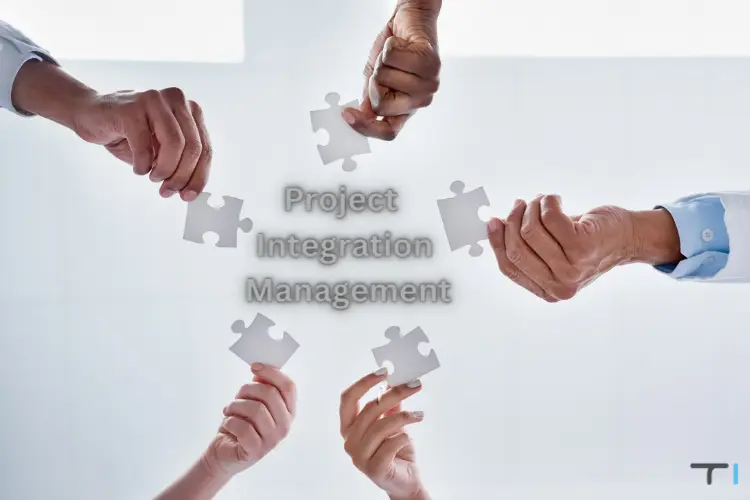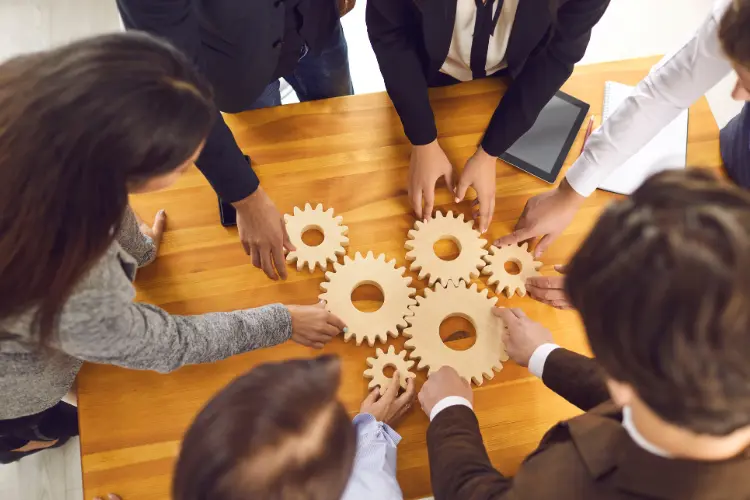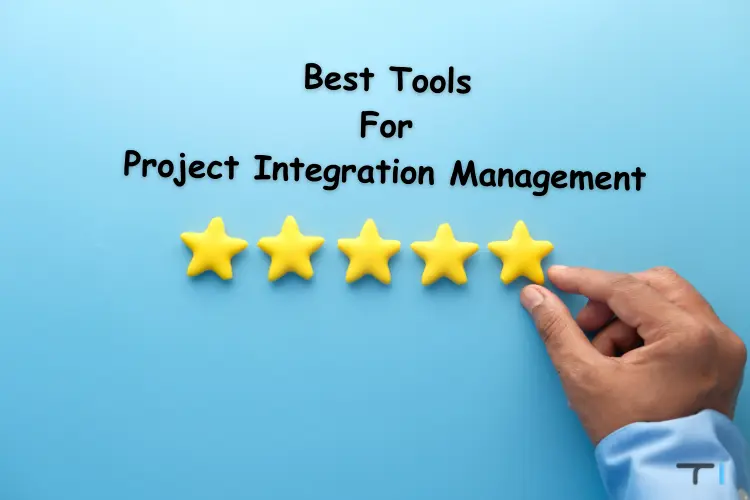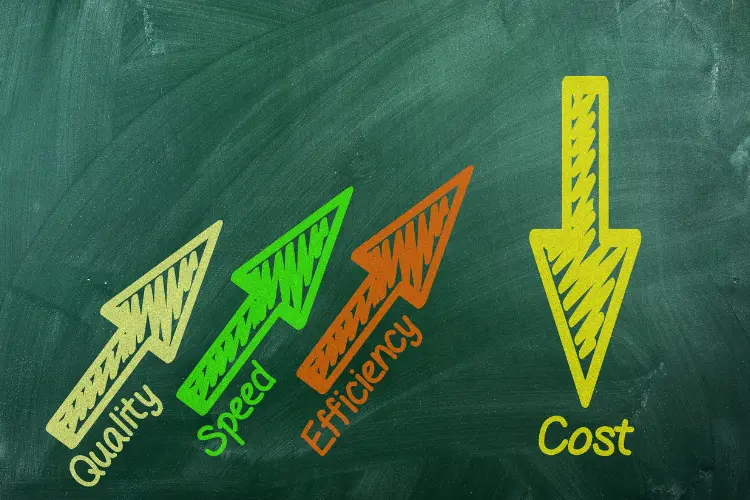In the ever-changing world of project management, there’s this thing called Project Integration Management (PIM) that’s like the secret sauce for success. It’s not just some fancy term – it’s a strategic approach that brings everything together, from resources and timelines to goals. It’s all about making sure projects not only get done but also rock. And if you’re a CEO or manager in the SaaS industry, understanding PIM isn’t just a nice-to-have -it’s a must-have.
Contents
- 1 Understanding Project Integration Management
- 2 The Need for Project Integration Management
- 3 Key Features of Project Integration Management
- 4 Benefits of Integration in Project Management
- 5 Best Tools for Project Integration Management
- 6 How Integration Increases Efficiency in Project Management
- 7 Future of Project Integration Management
- 8 Conclusion
Understanding Project Integration Management

Definition and Overview
Project Integration Management (PIM) is the leader of project management. The glue holds all the pieces together, ensuring everything is on track from start to finish. Think of it as the project’s best friend, coordinating tasks, project teams, and processes to create a seamless workflow. Without PIM, projects can be chaotic. So, if you want your project to be a smashing success, make PIM your new best friend.
Core Components
At the heart of Project Integration Management, we’ve got three key components: planning, execution, and monitoring. These form the backbone of PIM, each playing a crucial role.
First up, we’ve got planning. It’s all about setting the project’s roadmap and ensuring every step and resource is covered. No stone is left unturned.
Next, we’ve got execution. This is where the magic happens. We’re discussing managing teams and resources to bring those project outcomes to life.
Last but not least, we’ve got monitoring. This is like having eyes on the prize 24/7. We’re constantly tracking the project’s progress, ensuring it sticks to the plan and making adjustments when needed. You can’t let things go off the rails, right?
When you bring these components together, it’s like a well-orchestrated symphony. Each phase smoothly transitions into the next, and all activities align toward that common goal.
Integration of Resources, Timelines, and Goals
Integrating resources, timelines, and objectives is a major hurdle in a project management plan. Project Integration Management comes to the rescue with a structured approach to make it all work seamlessly. It aligns resources, timelines, and goals, ensuring maximum efficiency and effectiveness. No more wasting resources or facing unnecessary delays. PIM is the secret weapon that delivers maximum value and saves the day!
Theoretical Frameworks
In Project Integration Management, two methodologies provide structured approaches: PMBOK and PRINCE2.
PMBOK, or the Project Management Body of Knowledge, is all about process groups. It gives you the lowdown on managing the different phases of a project, from start to finish, making sure everything fits togethe.
On the other hand, we have PRINCE2 (Projects IN Controlled Environments), which takes a more project-centric approach. It’s all about giving managers more control over resources and risks by breaking projects down into bite-sized stages that are easy to handle.
Although they have different approaches, both of these frameworks are designed to help project managers integrate everything seamlessly and keep things running smoothly. They provide tools and guidelines to project managers to navigate the crazy world of modern projects. So, no more pulling your hair out trying to figure it all out!
The Need for Project Integration Management

Complexity in Modern Projects
The landscape of modern project management plans is getting complicated. Projects these days are all over the place – different departments, different disciplines, different countries! It’s puzzling with teams that are as diverse as can be. And coordinating all of this can be a real headache. That’s why project integration management (PIM) is so darn important. PIM brings everything together and ensures all the moving parts work towards the same goal.
Aligning Multiple Aspects
One of the key roles of PIM is to ensure everything is in sync across different project dimensions. You know, like harmonizing all those different project phases, from start to finish. It’s all about aligning those pieces under one vision so we don’t end up with conflicting objectives and disjointed efforts. PIM helps us stay focused on the bigger picture by keeping things cohesive and the whole project running like a well-oiled machine. So, yeah, it’s all about streamlining and efficiency.
Synchronizing Communication
When it comes to the project management plan, effective communication is just as important as the technical aspects of the project itself. I mean, seriously, without proper communication, things can go downhill faster than a rollercoaster ride. My friend PIM plays a crucial role in keeping everyone on the same page. It’s like the traffic cop of project information, ensuring updates flow smoothly and misunderstandings are kept at bay. So, with a solid communication plan, PIM helps maintain transparency and builds trust among all parties involved. Underestimating the power of PIM is not a wise move!
Key Features of Project Integration Management

Holistic Planning and Execution
When you take that holistic view, you’re making decisions that consider the impact on all aspects and phases of the project. It’s like being ahead of the game, man. You can anticipate issues and opportunities and plan accordingly. That’s how you keep the project coherent and intact from start to finish.
Coordination of Processes and Activities
Effective PIM ensures everyone’s on the same beat, moving in sync, and understanding how their steps fit in. It’s like a dance where delays and bottlenecks are the worst partners, and we’re here to show them the door. By bringing all these elements together, PIM helps create a project trajectory that’s as smooth as a perfectly executed twirl.
Change Management
Change management makes you always ready to save the day when things go haywire. Change is as constant as that one friend who’s always late to the party. But fear not because PIM swoops in with its fancy cape and structured approach to handle these changes. It’s all about assessing the impact, planning the response, and communicating. Proper change management under PIM minimizes disruptions, and the project stays on track despite the inevitable twists and turns.
Resource Allocation
The success of a project heavily relies on how well resources are allocated and managed. PIM (Project Information Management) ensures that human, financial, or technical resources are allocated optimally throughout the project lifecycle. PIM involves continuously assessing and reallocating resources as needed. We’re all about efficient resource allocation here, maximizing productivity and minimizing waste. Because when it comes to project success, we mean business.
Performance Monitoring
Continuous monitoring is an absolute must in PIM. You have to keep tabs on your project’s progress and ensure it’s on track. Think of it as your project’s trainer, pointing out any issues or deviations. With performance monitoring tools and metrics, you’ll have all the insights you need to keep your project healthy. It allows you to make proactive moves and adjustments to stay on the right path.
Stakeholder Engagement
Stakeholder engagement is an absolute must in PIM. We’re talking about involving all the relevant stakeholders, not just at the beginning but throughout the project. This ongoing engagement is how we keep everyone in the loop, incorporate their feedback, and manage their expectations. Effective stakeholder engagement under PIM creates a sense of ownership and collaboration, elevating the project’s chances of success and acceptance when all is said and done.
Benefits of Integration in Project Management

Risk Mitigation
Project Integration Management (PIM) swoops in with a comprehensive project overview for project managers, spotting potential risks . This foresight gives project managers the power to proactively implement strategies, dodging project derailment like a boss and ensuring smooth execution.
Cost Management
In the realm of cost management, effective PIM is an absolute game-changer. It slashes wastefulness and supercharges resource allocation, resulting in massive cost savings. With PIM, every aspect of a project comes together seamlessly, ensuring that no resource goes to waste and giving your budget a serious boost. Say goodbye to unnecessary expenses and hello to budget efficiency like never before!
Time Management
Proper time management is crucial for the success of any project, and PIM (Project Information Management) plays a major role in making it happen. By bringing together different project elements like tasks, schedules, and resources, PIM ensures that projects stick to their deadlines. This alignment is key to avoiding delays and ensuring projects are completed on time, which is vital to keep the project’s momentum going and all stakeholders happy. So, let’s embrace the power of PIM and conquer the world of project management!
Quality Enhancement
PIM brings much-needed harmony to your deliverables. It’s all about ensuring that every project component works together like a well-oiled machine, resulting in outputs that not only meet but exceed those quality standards. Think of PIM as your secret weapon, executing each stage of your project with precision and finesse. With PIM by your side, you can say goodbye to mediocre deliverables and hello to greatness. It’s time to unleash the power of PIM and take your projects to new heights!
Flexibility and Adaptability
In the ever-changing world of project management, PIM comes to the rescue with its flexibility and adaptability for project managers. It allows project managers to tackle any curveballs that come their way – whether from within the project itself or the wild forces of the outside world. This adaptability is key to keeping the project relevant and successful in a world that just won’t sit still.
Best Tools for Project Integration Management

- Asana: With Asana‘s user-friendly interface and excellent capabilities, it’s the go-to choice for many. It’s a personal assistant who effortlessly organizes projects, sets priorities, and tracks progress. It’s a pro at streamlining workflows and boosting team collaboration. It keeps everyone on the same page and projects on track, no matter how chaotic.
- Trello: Trello’s unique card/board system makes work management intuitive and visual so you can conquer tasks. It’s perfect for teams who need a flexible system that works. Trello keeps it simple and powerful with seamless integration options that will blow your mind. It’s the go-to for project management plan needs, especially if you’re all about that visual and straightforward vibe.
- Microsoft Project: This tool is seriously impressive for project management, with comprehensive features that cover all aspects of the job. Microsoft Project is used for handling complex project schedules and resource allocation. It plays so well with other Microsoft Office applications that it’s practically a match made in tech heaven. This is the ultimate power move if you’re already in the Microsoft ecosystem.
- Smartsheet: Smartsheet is seriously impressive. It’s got the best of spreadsheets, project management plan software, and collaborative tech rolled into one user-friendly package. Talk about a multitasker! And real-time tracking and seamless collaboration? That’s some next-level work management right there. So yeah, if you’re looking for a tool that’s got it all, Smartsheet is the way to go.
- Wrike: Wrike is pretty awesome regarding collaborative features and design. It’s got that sweet customization level that’s super handy for teams with specific workflow needs. Plus, it’s all about efficient task management, real-time updates, and playing nice with other apps. Talk about project integration and management on a whole new level! Check out our blog post for further details on top project management tools.
How Integration Increases Efficiency in Project Management

Streamlining Project Processes
PIM, let me tell you how it works wonders for project efficiency. It helps streamline all those messy project processes. It’s a real game-changer, trust me. With PIM, managing multiple tasks and teams becomes a breeze, thanks to its unified framework. No more pulling your hair out over project logistics, my friend. It’s all about that organized and efficient workflow that saves precious time. So hop on the PIM train and say goodbye to Project Chaos!
Facilitating Better Decision Making
With an integrated project management plan, decision-making becomes more informed and freaking effective. PIM gives you the whole shebang, allowing managers to make smart-ass decisions based on comprehensive data and badass insights. This results in strategic moves that kick off the project’s trajectory.
Resource Optimization
Resource optimization is like having a superpower for your business. It’s all about ensuring that every resource – people, money, or technology – is used in the smartest and most efficient way possible. It saves your project from wastefulness and inefficiency. You’re making sure that every dollar, every minute, and every ounce of brainpower is put to good use. And when you optimize your resources, you boost productivity, save money, and make your project more cost-effective. So why settle for anything less than the best? Let’s optimize those resources and take your project to new heights!
Reducing Redundancies
PIM is crucial in identifying and eliminating those pesky redundancies within project processes. Integrating various project elements makes it a breeze to spot overlapping tasks or unnecessary procedures.
Enhancing Team Productivity
Team productivity gets a massive boost with PIM. PIM creates a more collaborative and efficient work environment by aligning team efforts with project goals and providing clear communication channels. This alignment ensures that every team member works towards a common objective, increasing overall productivity.
Accelerating Project Delivery
In project delivery, PIM is the secret sauce that turbocharges the process. Projects can be whiz by streamlining operations and optimizing resource management without sacrificing quality. This speed boost is vital for staying ahead of the game and meeting stakeholder expectations with flair and finesse. So, buckle up and embrace the power of PIM to conquer the competition!
Future of Project Integration Management

Some pretty cool emerging trends are shaping the future of PIM. I’m talking about the rise of artificial intelligence, the growing importance of data analytics in project management, and the shift toward remote and virtual project teams. These trends make PIM more efficient, scalable, and adaptable to all project needs.
And let’s not forget how globalization has made PIM more critical than ever. It helps manage project teams and projects spread across the globe, overcoming all those pesky cultural, linguistic, and time-zone barriers. PIM is all about global collaboration and coordination, bringing diverse project teams together to achieve a unified goal.
But wait, there’s more! Technological advancements are continuously reshaping PIM. It’s like PIM got a makeover with the integration of cloud computing, mobile technologies, and collaborative tools. Now, projects are managed with a snap of your fingers, with information at your fingertips and communication flowing like magic.
And here comes the real game-changer: AI and machine learning. These are revolutionizing PIM, making project management smarter than ever. They bring predictive analytics for risk management and automating those mundane tasks. They’re the secret sauce that makes project planning, execution, and monitoring super accurate and efficient. So buckle up, PIM is going places, and these trends are leading the way. It’s time to embrace the future and unleash the power of PIM!
Conclusion
In a nutshell, Project Integration Management is more than just a fancy tool- it’s a whole mindset. It’s all about bringing together different project pieces in a way that just clicks. And let’s face it, in the SaaS industry, where things can get pretty complex and multi-dimensional, PIM isn’t just useful- it’s an absolute must-have. The future of project management lies in mastering the art of seamlessly integrating these diverse elements. Those who nail it will be the rockstars driving efficiency and growth, leaving the rest wondering how they do it. So, are you ready to embrace the power of PIM and rock the project management world? Let’s do this!


